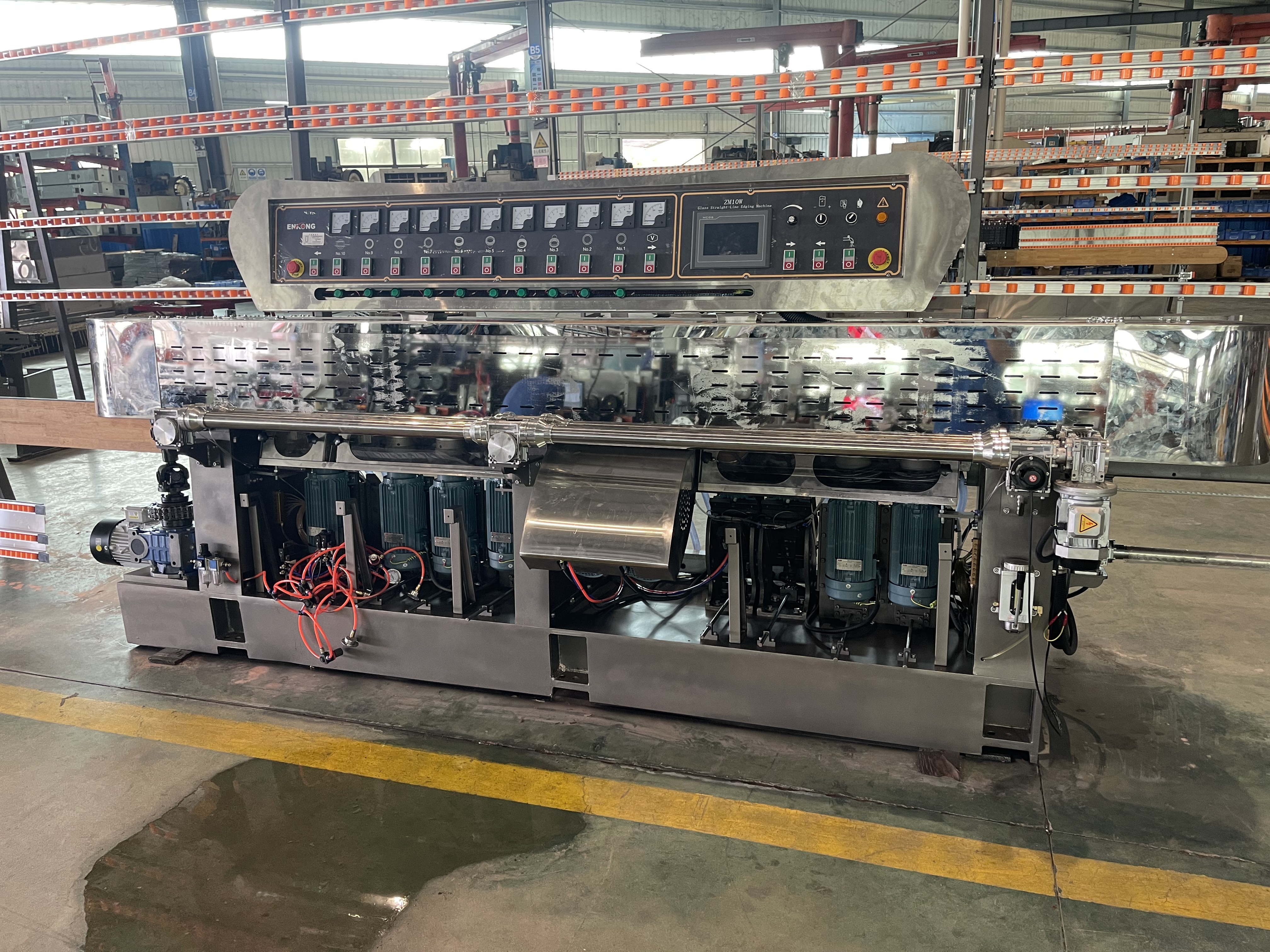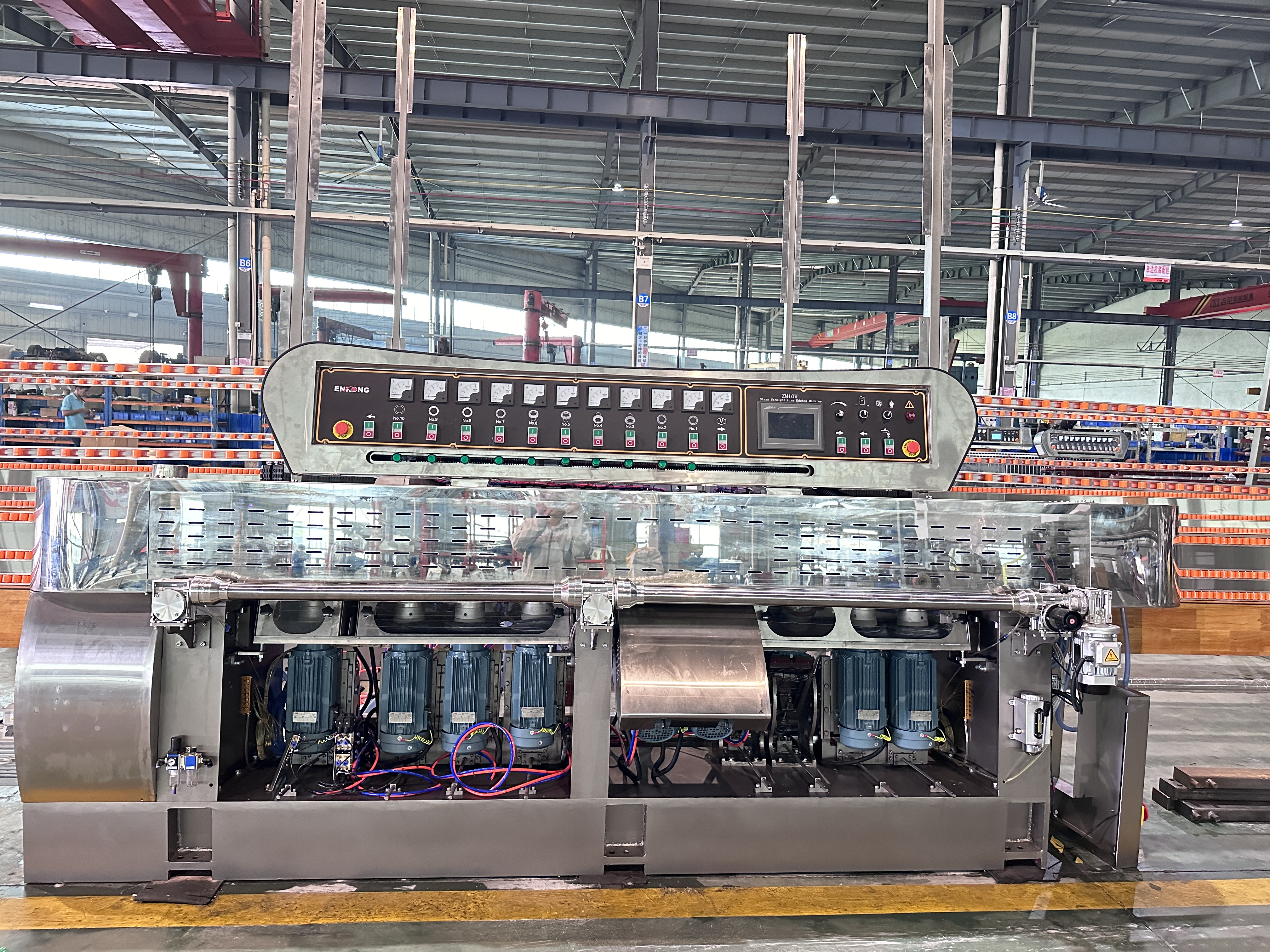Introduction
The glass manufacturing industry is witnessing a transformative era with advancements in glass processing machines, particularly in specialized equipment like glass straight line edging machines and laminated glass edging machines. These innovations address critical challenges in precision, efficiency, and sustainability for laminated glass production. This article explores cutting-edge developments in edging machinery, integrating insights from recent research and industrial patents to highlight their impact on modern manufacturing workflows.
1. Evolution of Glass Straight Line Edging Machines
The glass straight line edging machine has undergone significant technological upgrades to meet the demands of high-throughput and multi-angle processing. A notable example is the multi-stage edging machine described in Patent CN14205008, which integrates a compact design with automated grinding, cleaning, and drying systems. Key features include:
Tilt Mechanism: Utilizing cylinders and bearing frames, the machine adjusts grinding wheels to process multiple inclined edges simultaneously, eliminating the need for manual repositioning.
Water Recycling and Drying: A closed-loop water circulation system reduces waste, while sponge roller assemblies ensure debris-free surfaces post-grinding, achieving a 30% improvement in efficiency compared to traditional methods.
Adaptive Control: Sensors optimize grinding pressure (0.5–1.2 MPa) and wheel speed (1,500–3,000 RPM) based on glass thickness, minimizing edge chipping.
This innovation aligns with broader trends in glass processing machines, where integration of IoT and real-time analytics further refines operational precision.
2. Advancements in Laminated Glass Edging Machines
Laminated glass edging machines face unique challenges due to the composite structure of laminated glass (e.g., PVB interlayers). Recent breakthroughs focus on minimizing delamination and enhancing edge clarity:
Chemical Mechanical Grinding (CMG): Research demonstrates that CMG technology achieves surface roughness (Ra) as low as 0.795 nm for quartz glass, comparable to polishing results. By balancing chemical etching and mechanical removal, CMG eliminates subsurface damage—a critical requirement for laminated glass with glass straight line edging machine used in photomasks and displays.
Laser-Assisted Edging: Studies using 532 nm nanosecond lasers show that parameter optimization (e.g., pulse energy: 50–100 μJ, cutting speed: 200–500 mm/s) produces crack-free edges on laminated glass, reducing post-processing time by 40%.
Industrial applications now incorporate hybrid systems combining CMG and laser edging, ensuring both precision and throughput for automotive and architectural laminated glass.

3. Integration of Smart Technologies in Glass Processing Machines
Modern glass processing machines leverage AI and machine learning to achieve unprecedented accuracy. For instance:
Predictive Maintenance: Sensors monitor abrasive wear in real-time, with algorithms predicting grinding wheel replacement intervals. Trials on roller mills show a 20–30 g/t wear rate during cullet grinding, reducing downtime by 25%.
Process Optimization: AI models analyze historical data to recommend parameters (e.g., pH 8–10 for CMG fluids, optimal drying temperature: 80–120°C), ensuring consistency across batches.
These advancements are particularly impactful for laminated glass edging machines and glass straight line edging machine, where layer adhesion and optical clarity demand micrometer-level precision.
4. Sustainability and Cost Efficiency
The shift toward eco-friendly glass processing machines is evident in two areas:
Waste Reduction: Advanced roller mills achieve 90% cullet recycling rates, producing glass powders (<0.1 mm) and sands (0.1–1.0 mm) at costs below €10/ton of glass straight line edging machine.
Energy Efficiency: Slip-casting techniques for silica glass fabrication reduce energy consumption by 50% compared to traditional melting methods, critical for large-scale laminated glass with glass processing machine production.
Such innovations align with global sustainability goals while maintaining profitability—a dual advantage for manufacturers.
5. Case Study: High-Performance Laminated Glass for Automotive Applications
A leading manufacturer adopted a next-gen laminated glass edging machine and glass processing machine integrating CMG and laser technologies. Results include:
Edge Quality: Ra <1 nm, meeting ISO 13785-2 standards for automotive glazing.
Throughput: 500 panels/day, a 60% increase over conventional systems.
Defect Rate: Reduced from 5% to 0.8% through AI-driven anomaly detection.

